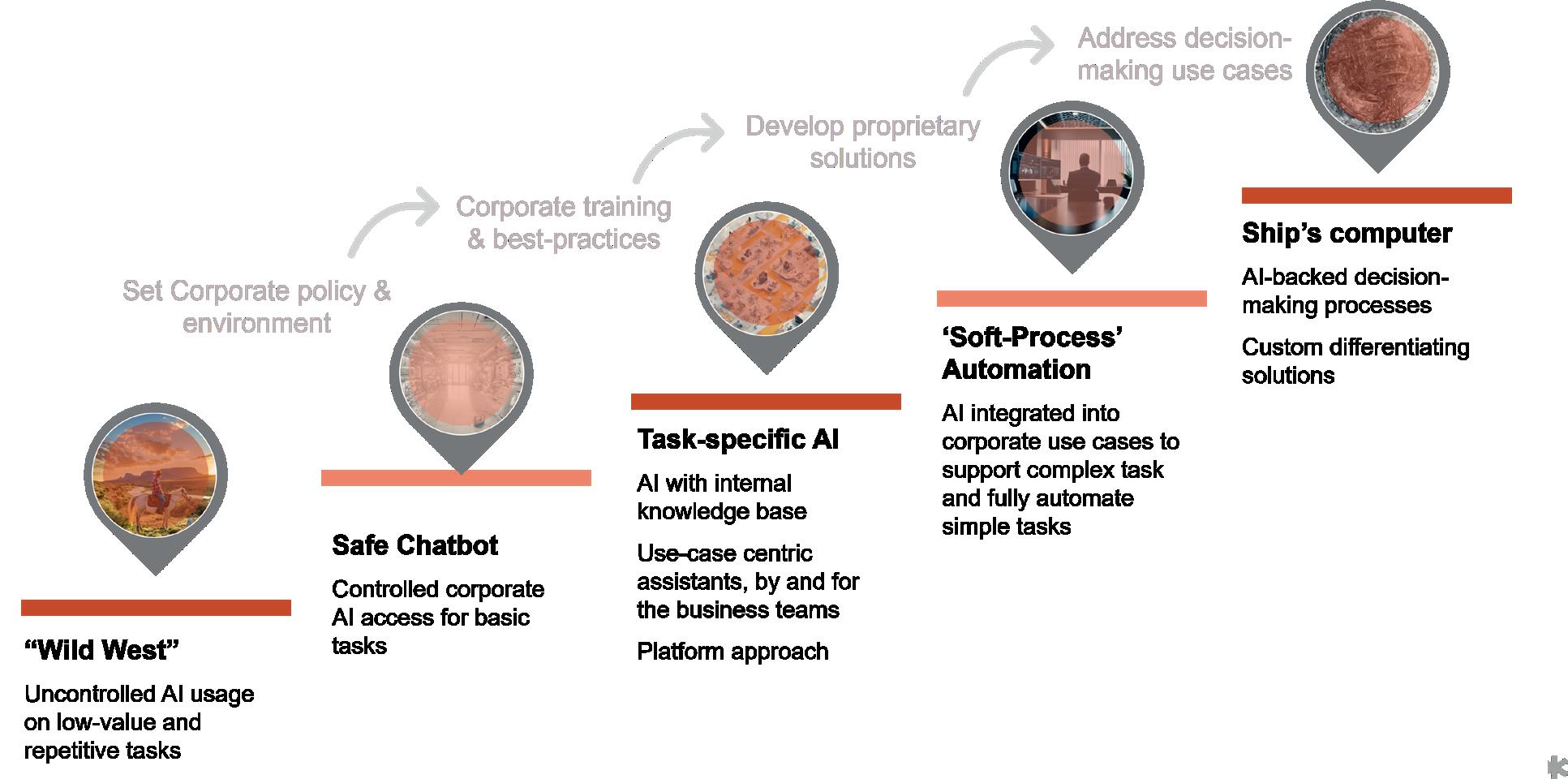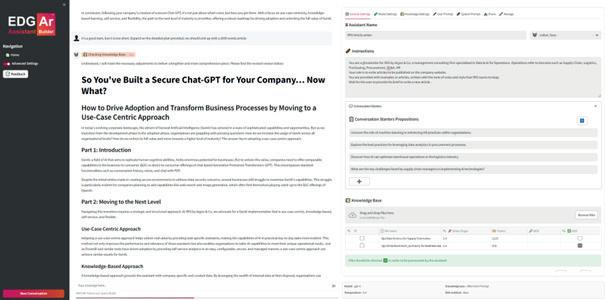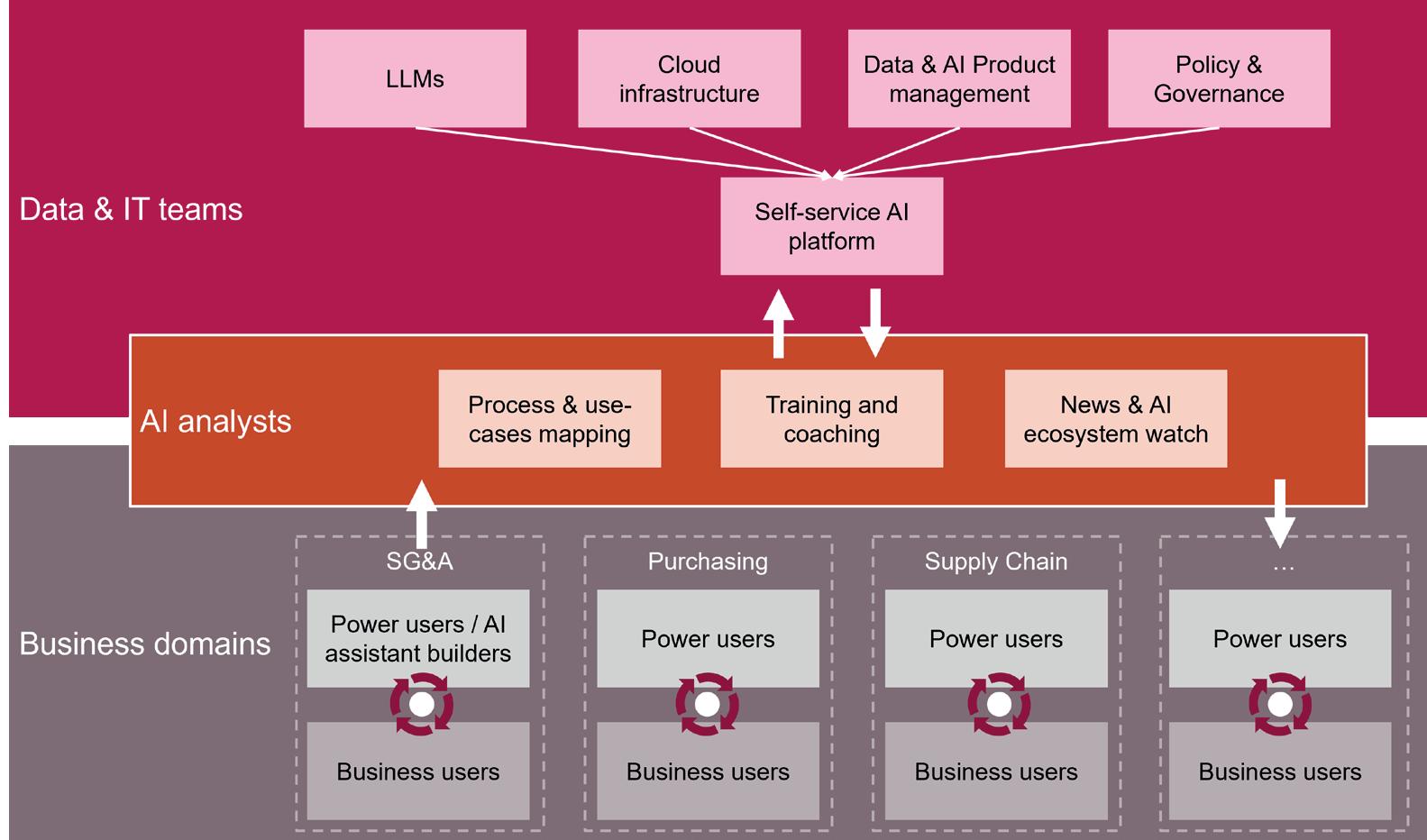
HOW TO TRANSFORM A BUSINESS WITH USE-CASE CENTRIC AI ASSISTANTS
A practical guide to move from a general purpose chatbot to a platform of task-specific and knowledge-based assistants



INTRODUCTION
Artificial intelligence is reshaping the way people work, communicate, and solve problems. Chatbots are one of the most popular applications of AI, as they can provide natural and engaging interactions with users across various domains and platforms. However, not all chatbots are created equal. Some chatbots are general purpose, meaning they can handle various kind of query or conversation, while others are use-case centric, meaning they are designed to perform specific tasks or functions for users.

This whitepaper will explain why use-case centric AI assistants are more valuable and effective than general purpose chatbots, and how to build and deploy them in an organization using a platform approach. It also contains a detailed plan that was developed based on Argon & Co's experience and best practices, to facilitate adoption and transformation with use-case centric AI assistants.
Why now?
The impressive capabilities of general purpose chatbots like Chat-GPT, Google Bard or Claude pushed companies to quickly offer a similar experience to each employee, but in a setting that respects Data security and confidentiality.
By now, many companies pushed out to their employees their own secure version of a general-purpose chatbot, a company-GPT. Others are exploring the activation of Microsoft Copilot or Duet AI, catching up to offer a fully featured chatbot, liked what individual consumers can now experience with ChatGPT “plus”: with capabilities such as vision, text file uploads and web search, to name a few.
But as we transition from the development phase to the adoption phase, organizations are grappling with pressing questions: How do we increase the usage of GenAI across all organizational levels? How do we unlock its full value and move towards a higher level of maturity? The answer lies in adopting a use-case centric approach.



Moving to the next level
Use-case centric AI assistants are chatbots that are tailored to a specific task or function that users need to accomplish. For example, an AI assistant for processing candidate resumes, for answering FAQs on internal processes, for writing an article based on a specific brief and tone of voice, etc.
These assistants are not meant to handle any kind of query or conversation, but rather to focus on the user's goal and provide the best possible solution or guidance. As a result, they have several advantages over general purpose chatbots:
• They provide more value and relevance to users, as they can solve real problems and improve productivity and efficiency.
• They have better performance and accuracy, as they are tuned and prompt engineered on specific data and scenarios.
• They are easier to build and maintain, as they have a clear scope and objective.
• They require less knowledge of prompt engineering techniques from the end user.
• They are easier to measure and improve, as they have defined metrics and feedback mechanisms.
To build use-case centric AI assistants, a dedicated platform allowing to create, configure, and deploy them is required. This platform should be:
• Self-service: to be truly transformative and drive adoption at every level of the organization, business users should be empowered to create and configure their own assistants, and not rely on the limited bandwidth of a central development team.
• Knowledge-based: to ground each assistant with its own company-specific and curated document sources, fit for each use-case.
• Flexible: to enable the quick development of AI assistants to fit a variety of use-cases. The choice of LLM, the method of context integration (raw / RAG), the system prompt… These are just a few examples of parameters that should be easily configurable.
• Explainable: to clearly show the context used by the assistant, the relevant sources and how it “thinks” through complex tasks.
It is possible to either build a company's own platform from scratch, or use an existing platform from the market, depending on the resources, requirements, and preferences. Argon & Co chose to develop EDGAr Assistant Builder, to get the added benefit of being able to expand the capabilities of the platform as new features and models come out of the AI ecosystem.








